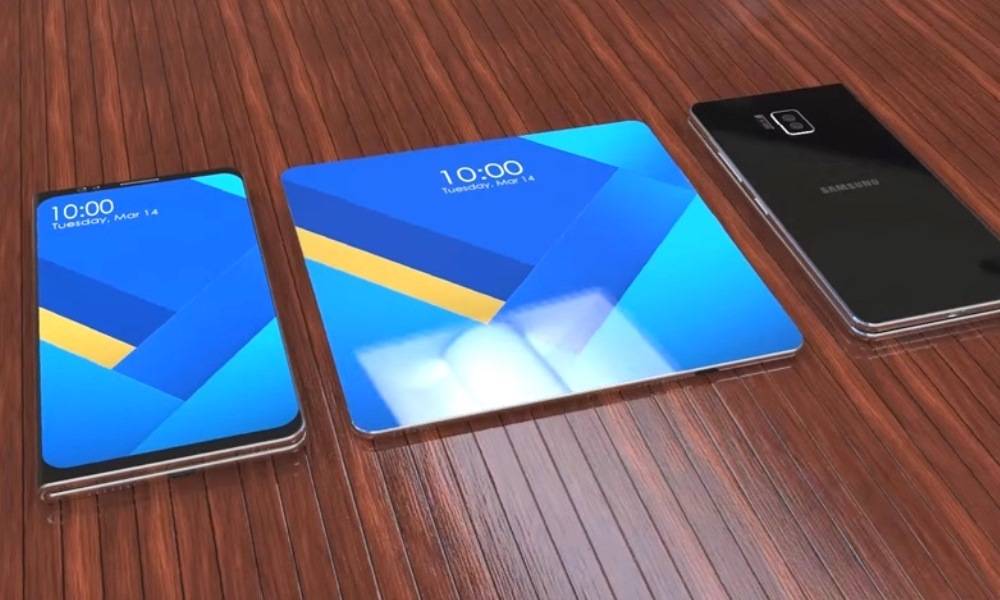Dismal Galaxy S9 Sales Prove Samsung Needs a Foldable Smartphone ASAP
 Credit: Tech Configurations
Credit: Tech Configurations
Toggle Dark Mode
Apple wasn’t the only international tech-company to announce its latest quarterly earnings — but it was certainly the better-performing among them.
Samsung recently announced its own earnings results for the second-quarter in a conference call with investors. And while the South Korean company posted quarterly revenue of 58.4 trillion won ($52.1 billion) — which is down 4 percent, year-over-year — it also reported operating profit of 14.87 trillion won ($13.3 billion) which is about 6 percent higher than the same quarter a year ago.
Even despite the boost in net profits, as Samsung itself projected just weeks ago, these figures still fall short of the company’s original expectations for the quarter. In its press release, the Galaxy S-maker largely points its finger at the sad state of Galaxy S9 sales as the main reason why its revenue dropped so sharply.
“Second quarter revenue fell due to softer sales of smartphones and display panels, despite robust demand for memory chips,” Samsung noted in its official press release. “Amid the stagnant high-end smartphone market, the IT & Mobile Communications Division reported a drop in earnings, both year-on-year and quarter-on-quarter, over slow sales of the Galaxy S9.”
Slowing Sales, Challenging Competition
While Samsung stopped short of indicating exactly how many Galaxy S9 units it sold, the company acknowledged that sales were slower during the last several quarters, including the first quarter of 2018.
Striking a more ominous tone, Samsung then noted the overall challenge currently plaguing mobile market growth, saying the condition will likely “remain challenging” for the rest of the year as competition heats up in the third-quarter with both its Galaxy Note 9 and Apple’s highly-anticipated 2018 iPhone lineup staged to hit store shelves in the coming weeks.
Samsung confirmed its plans to launch the new Galaxy Note 9 about a month earlier, just like it did last year, as a direct response to Apple possibly unveiling its new iPhone flagships on September 12th. Interestingly, the company noted, its next-generation S-Pen phablet will offer consumers “exceptional performance for a reasonable price,” suggesting that the flagship may cost a bit less than its predecessor, but only time will tell that much.
Either way, the Galaxy Note 9 isn’t expected to be much different than its predecessor, featuring the same form-factor, design and 6.3-inch AMOLED Infinity display while adding upgraded internal components, camera hardware and an upgraded S-Pen stylus.
It certainly will be a powerful device, however the Note 9 is unfortunately expected to face a fate similar to its S9 counterparts — with sales likely to be slow throughout the remainder of 2018, as the company, interestingly, notes it will shift focus towards a “future of reinforcing product competitiveness based on hardware leadership.”
Galaxy F, Galaxy S10 for the Rebound?
Most interesting of all is a paragraph towards the end of Samsung’s press release, wherein the company hints at “new opportunities” in various segments of its business, including the “introduction of new form factors and innovative technologies (including 5G) to support growing demand for connected devices.”
While it obviously didn’t mention the devices by name, Samsung is clearly hinting at its upcoming Galaxy S10 and foldable Galaxy X (or Galaxy F) smartphone, which will resemble an all-new form-factor and design allowing its OLED display to bend and fold in half. The device is expected to feature a massive 7-inch or larger foldable OLED display, in addition to a number of cutting-edge technologies which Samsung is currently developing behind-the-scenes.

Image via StuffBoxNews
Given these advancements, however, the Galaxy F is rumored to cost somewhere in the ballpark of $2,000 when it launches during the first-half of next year.
Also launching early next year is Samsung’s incredibly hyped-up Galaxy S10, which, unlike its soon-to-be predecessors, is expected to undergo significant design and technological upgrades. In addition to a larger AMOLED display possibly measuring 6.5-inches, Samsung’s Galaxy S10 is slated to incorporate an arsenal of new tech including an ultrasonic glass-embedded fingerprint reader, an even more refined edge-to-edge design with shrunken bezels, upgraded components and even a new acoustic sound-emitting display technology replacing the traditional earpiece — if such a futuristic feat can be achieved in time, of course.
All things considered, Samsung has plenty of reason to be hopeful for the success of its future Galaxy devices, especially for what they’ll offer consumers in a highly-competitive market. As with the nature of all major product launches, though, it’s the consumer who will ultimately determine success.






